 |
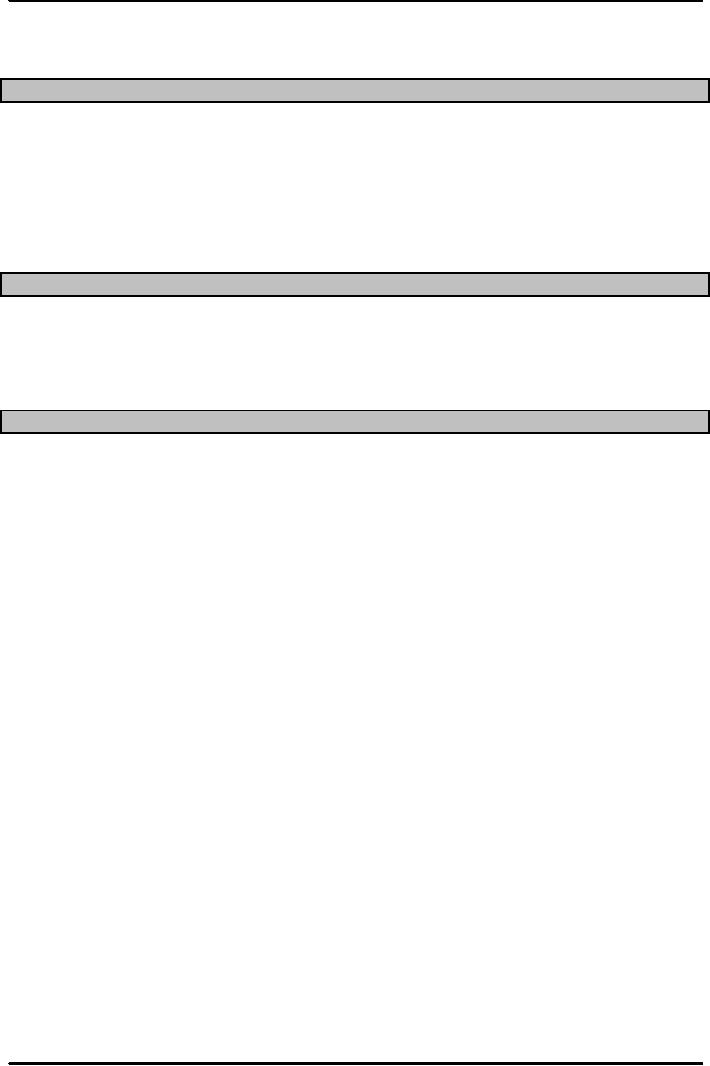
Production
and Operations Management
MGT613
VU
Lesson
24
SERVICE
QUALITY
Learning
Objectives
After
completing this lecture the
students should be able to
describe the five dimensions of
service
quality
in detail. This would enable them to
use the service quality gap
model to diagnose quality
problems
also understand the quality service by design
concepts. This lecture would
provide the
students
with an opportunity to learn and
illustrate how Taguchi
methods and poka-yoke methods
are
applied
to quality design. The students
should be able to at least
gain awareness how
organizations
perform
service quality function deployment in
order to improve their operations side.
The students
should
also be able to construct a statistical
process control chart.
Moments
of Truth
Each
customer contact (between the service provider and
customer) is called a moment of
truth.
An
organization has the ability to
either satisfy or dissatisfy them
when you contact them.
A
service
recovery is
satisfying a previously dissatisfied
customer and making them a
loyal
customer.
Dimensions
of Service Quality
Dimensions
for Service Quality are more or
less the same which we
associate with the concept
of
Quality
in General. Also, we as service demanders
(customers) are well aware
of the fact that we
always
seek
reliability, agility (prompt
responsiveness), assurance, tangibility
and empathy while
being
provided
with a service. More or less
these dimensions help the customer to
rate and distinguish one
service
provider from another. A
good service from a bad service. Often
organizations use a
performance
measure matrix using the
same service dimensions and they
often call it RATE based
on
the
5 dimensions described below.
1.
Reliability:
Perform promised service dependably and
accurately.
2.
Responsiveness:
Willingness to help customers
promptly.
3.
Assurance:
Ability to convey trust and
confidence.
4.
Tangibles:
Physical facilities and facilitating
goods.
5.
Empathy:
Ability to be approachable.
Normally
in such situations, R represents
Reliability and Responsiveness, A
represent Assurance, T
represents
Tangibles and E represents Empathy
respectively.
106
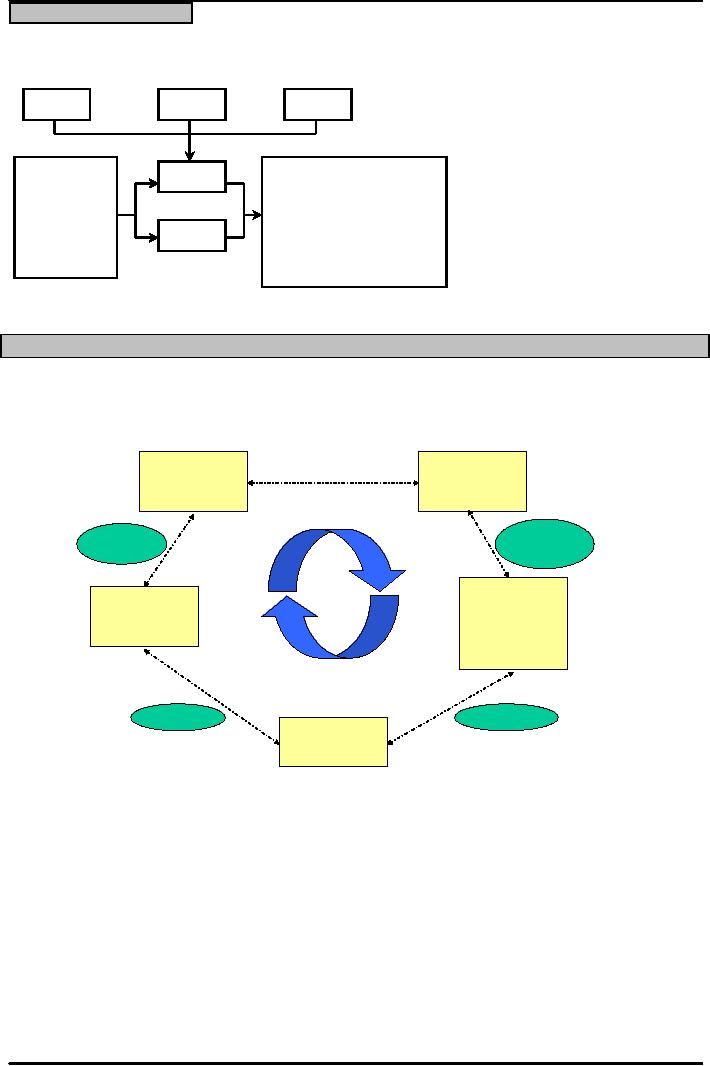
Production
and Operations Management
MGT613
VU
Perceived
Service Quality
It
is often seen that a
customers required service is not
provided by the service provider
primarily
because
of a gap between Service Quality Dimensions
and Service Quality Assessment by the
customer.
Word
of
Personal
Past
mouth
needs
experience
Service
Quality
Service
Quality Assessment
Expected
Dimensions
1.
Expectations exceeded
service
Reliability
ES<PS
(Quality surprise)
Responsiveness
2.
Expectations met
Assurance
ES~PS
(Satisfactory quality)
Perceived
Empathy
3.
Expectations not met
service
Tangibles
ES>PS
(Unacceptable
quality)
Service
Quality Gap Model
We
can pictorially capture the gaps
that exist between service provided and
the service demanded
Customer
Customer
Customer
Satisfaction
GAP
5
Perceptions
Expectations
Understanding
Managing
the
Customer
/
the
Customer
Evidence
Marketing
Research
Communication
GAP
1
GAP
4
Management
Service
Perceptions
Delivery
of
Customer
Expectations
Conformance
Design
GAP 2
GAP
3
Conformance
Service
Design
Service
Standards
107

Production
and Operations Management
MGT613
VU
Service
Gap Analysis
A
good example where gap analysis is
used for improvements in
business is in the services
field
The
most popular assessment tool
used in service quality is called
SERVQUAL, which
involves
a set of the 5 most important dimensions
of quality according to rankings
of
customers
Also
involves a set of 5 gaps
which represent the difference between
customers'
expectations
and perceptions or in other words the difference
between expected level of
service
vs. Actual level of service
provided
SERVQUAL
(Stands for
SERVICEQUALITY).
SERVQUAL
Model Gaps
Let's
try to capture all 5 gaps; one by
one this would help us to
understand in detail the 5 dimensions of
service
quality.
Gap
1
The
difference between actual
customer expectations and management's
idea or perception of
customer
expectations.
Managers
and employees have a very internal process-oriented
view of their business, it is
tough to
break
this view and to see things
the way the customer
does
This
gap of the SERVQUAL Model can
help management with
customer service
Gap
2
Mismatch
between manager's expectations of service
quality and service quality
specifications
To
implement a system to improve
this gap, management must
first understand exactly what
the
customer
wants
If
this understanding is not
present, it will be impossible
for management to know
whether their
expectations
are aligned with customer
specifications.
Gap
3
Poor
delivery of service
quality
Once
the specifications from gap 2 are
aligned the next step is to
deliver these services in a
perfect
manner
Quality
of delivery must be perfected during the
interaction with the
customer
The
employees that are responsible for
these actions are referred to as contact
personnel
Some
reasons for a lack of
quality include poor
training, communication, and
preparation.
Gap
4
Differences
between service delivery and
external communication with
customer
Customers
are influenced by what they
hear and see about a
company's service
Word-of-mouth
publicity and advertising are
main outlets which customers
open their
opinions
to
The
difference between what a customer
hears about a company's service and
what is
actually
delivered is represented by gap 4
This
gap can lead to dangerously
negative customer perceptions
108
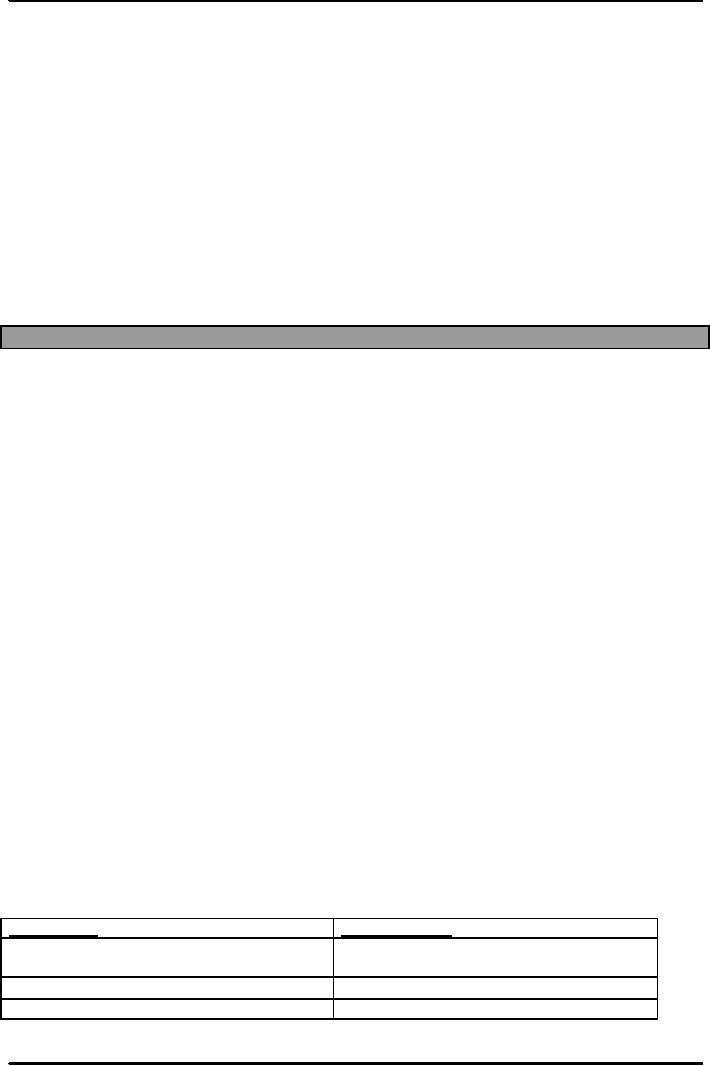
Production
and Operations Management
MGT613
VU
Gap
5
Differences
between Expected and
Perceived Quality
This
gap is directly related to everyone's
perception of service quality
Customers
expect certain things from
certain companies
When
someone goes into a
McDonalds to order their
favorite meal a Big Mac,
they are
expecting
exactly what they are
accustomed to getting (a quick, no
hassle, tasty big
burger
with
all the works). If it takes 15 minutes to
get a Big Mac that doesn't
even have the
famous
special sauce on it the customer's perceived service
of McDonalds is going to
plummet.
If
gaps 1 through 4 are closed
to a minimum then gap 5 should
follow, if there are any
gaps
left
in steps 1 through 4 the perceived
customer service quality will be
negatively affected
The
way to make sure these
gaps are closed is through
thorough systems design,
precise
communication
with customers, and a
well-trained workforce.
Quality
Service by Design
We
had discussed earlier, that design of a
product or service half ensures a
good productive system
and
we
did mention about Quality
indirectly. We now take a
direct approach and identify the ways in
which
we
can incorporate and identify
Quality in the Design of
Services.
1.
Quality in the Service Package :Quality
based service should be offered at
same price, club
class
passengers
in an airline though being
provided additional luxury
are not able to bring
enough
revenue.
An airline that does not add
quality would loose out to
its competitors.
2.
Taguchi Methods (Robustness): Relate to
the quality based methods
being able to deliver under
all
possible
environments. If a company is unable to
offer an after sales service to a
customer at any
particular
place in the same country, it would
simply lose out to its
competitors.
3.
Poka-Yoke: Poka Yoke (pronounced
POH-kah YOH-kay) is the Japanese
word for mistake
proof.
In
services, a simple mistake can have
dire consequences, think of a
hair dresser or stylist
giving
you
a wrong haircut. His mistake cannot be
rectified because service again is an
entity which is
based
on transaction between the service
provider and service
receiver. These
devices/strategies/mechanisms/methods
are used either to prevent
the special causes that result
in
defects,
or to inexpensively inspect each item
that is produced to determine whether it
is acceptable
or
defective.
4.
Quality Function Deployment: is
also known as QFD or House of
Quality. It is an important tool
of
Quality
Management and allows a company
not only to benchmark itself
with industry leader
but
also
to review its internal operations
critically.
The
thing to remember here is
that Quality in design ensures the
safe as well as reliable operations
of
the
service. Consider for example the simple
case of an oil change or a
hair cut. If the service provider
is
unable
to include Quality in service, or fails
to provide a consistent service under
all conditions or
fails
to
do justice to idea of mistake proof
service or is unable to deploy Quality
Function in his service, he or
she
would lose customers and
competitive advantage along with
loss in revenues and increase in
costs.
Classification
of Service Failures with Poka-Yoke
Opportunities
Server
Errors
Customer
Errors
Task:
Doing work
incorrectly
Preparation:
Failure to bring
necessary
materials
Treatment:
Failure to listen to
customer
Encounter:
Failure to follow system
flow
Tangible:
Failure to wear clean uniform
Resolution:
Failure to signal service
failure
House
of Quality
109
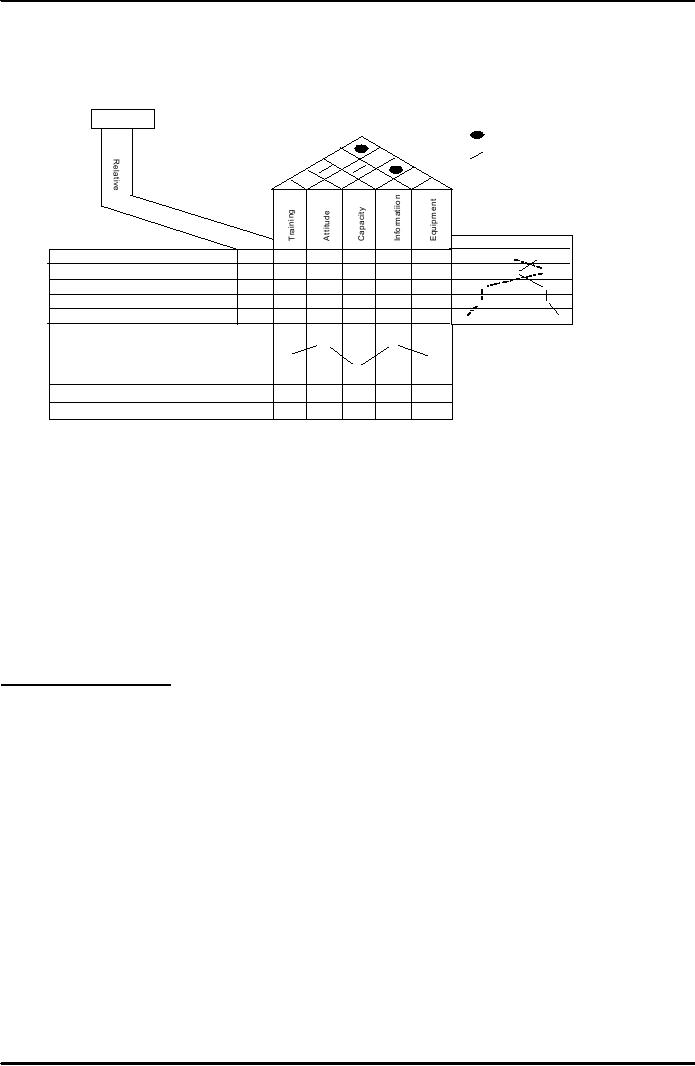
Production
and Operations Management
MGT613
VU
QFD
can strongly help an
organization focus on the critical
characteristics of a new or existing
product
or
service from the separate viewpoints of
the customer market segments,
company, or technology-
development
needs.
R
e l a t io n s h i p s
*
S
t ro n g
M
e d iu m
O
W
eak
O
O
*
*
C
u s t o m e r P e rc e p t io n s
S
e r vic e E le m e n t s
o
V
illa g e V o l v o
Im
po
+
rt
a
V
o l vo
D
e a le r
nc
e
C
u s t o m e r E x p e c t a t io n s
1
2
3
4
5
+
R
e lia b ilit y
o
9
8
5
5
+
o
9
R
es p o ns iven e s s
3
3
2
7
+
A
s s u ra n c e
o
9
6
5
6
+
o
7
4
E
m p a th y
+
o
2
2
3
T
a n g i b le s
+
o
o
C
o m p a ris o n
w
it h V o l v o D e a le r
o
o
o
_
W
e ig h t e d s c o re
82
63
102
65
127
Im
p r o v e m e n t d i ffi c u l t y r a n k
1
3
2
4
5
Achieving
Service Quality: Service Quality can be
achieved by making use of the following
strategies
Cost
of Quality
Service
Process Control
Statistical
Process Control
Unconditional
Service Guarantee
We
will discuss all four in
detail during our
discussions in lectures that
follow this lecture for the
time
being
we can reiterate the fact
that quality is offered free
of cost. Also, as prevention is
better than cure,
it
makes a lot more sense to
incur cost in prevention of
defects instead of allowing the defects
to occur
and
then rectifying them. Statistical
Process Control is one important
tool to ensure that Service
Quality
is
achieved before a defect is introduced in the service
being offered or product
being manufactured.
Costs
of Service Quality (Bank
Example)
This
example shows how a weak
design service can incur loss in
customer service, which leads to
loss
in
revenues. With this example
we also try to focus our
attention on the concept of cost in
quality
dimension.
We try to capture the importance of
prevention costs and how
they are more beneficial to
the
organization
as compared to detection and failure
costs. As a rule of thumb it is
said that prevention
costs
are half the detection costs
and about 12 to 16% of failure
costs, but these percentages
often fail to
represent,
the cost expenditures in all types of
services.
110
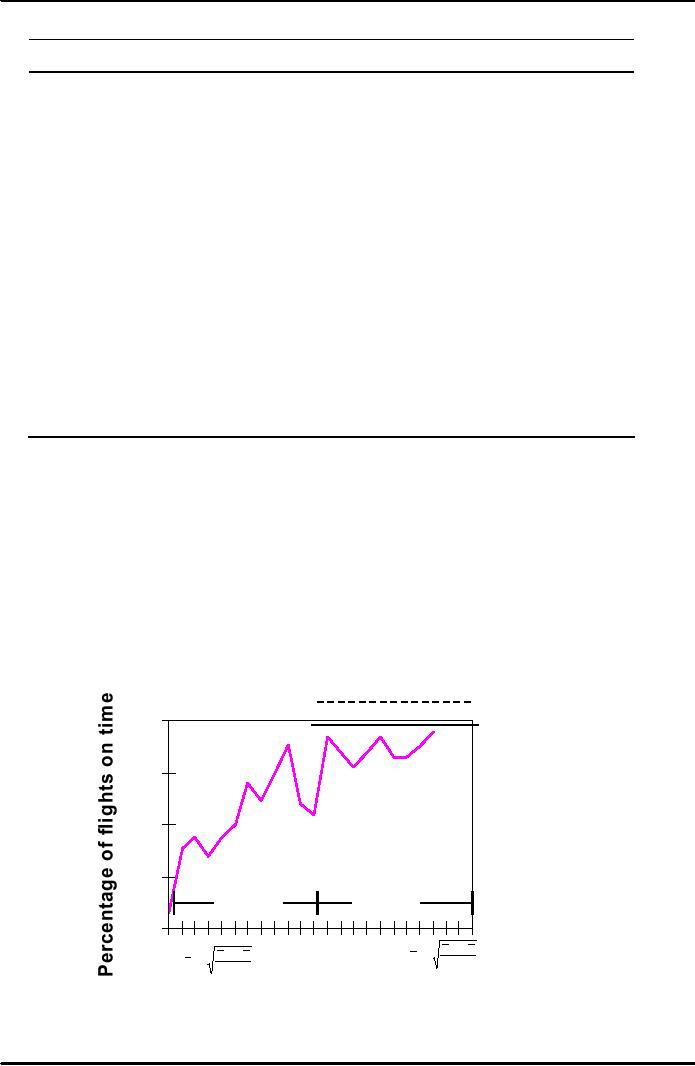
Production
and Operations Management
MGT613
VU
Failure
costs
Detection
costs
Prevention
costs
External
failure:
Loss
of future
Process
control
Quality
planning
business
Negative
Peer
review
Training
program
word-of-mouth
Liability
Supervision
Quality
audits
insurance
Legal
Customer
Data
acquisition
judgments
comment
card
and
analysis
Interest
Inspection
Recruitment
and
penalties
selection
Supplier
evaluation
Internal
failure:
Scrapped
forms
Rework
Recovery:
Expedite
disruption
Labor
and
Control
Chart of Departure Delays
We
talked about the concept of Service
quality and one of its dimensions
was Tangibility. We can
apply
this
dimension to the service provided by
airlines operating in Pakistan. If we happen to
visit any airport
in
the northern part of Pakistan during
winters especially during the
months of December and
January,
we
face a situation where often there is a
delay in the flight arrival and
departure. We can make good
use
of statistics to improve our service
quality. In the graph below
we have been able to identify
a
Lower
Control Limit and an Upper
Control Limit.
expecte
100
Lower
Control
90
80
70
199
60
p(1
-
p
p(1
-
p
LCL
=
p
-
3
UCL
=
p
+
3
n
n
111
Table of Contents:
- INTRODUCTION TO PRODUCTION AND OPERATIONS MANAGEMENT
- INTRODUCTION TO PRODUCTION AND OPERATIONS MANAGEMENT:Decision Making
- INTRODUCTION TO PRODUCTION AND OPERATIONS MANAGEMENT:Strategy
- INTRODUCTION TO PRODUCTION AND OPERATIONS MANAGEMENT:Service Delivery System
- INTRODUCTION TO PRODUCTION AND OPERATIONS MANAGEMENT:Productivity
- INTRODUCTION TO PRODUCTION AND OPERATIONS MANAGEMENT:The Decision Process
- INTRODUCTION TO PRODUCTION AND OPERATIONS MANAGEMENT:Demand Management
- Roadmap to the Lecture:Fundamental Types of Forecasts, Finer Classification of Forecasts
- Time Series Forecasts:Techniques for Averaging, Simple Moving Average Solution
- The formula for the moving average is:Exponential Smoothing Model, Common Nonlinear Trends
- The formula for the moving average is:Major factors in design strategy
- The formula for the moving average is:Standardization, Mass Customization
- The formula for the moving average is:DESIGN STRATEGIES
- The formula for the moving average is:Measuring Reliability, AVAILABILITY
- The formula for the moving average is:Learning Objectives, Capacity Planning
- The formula for the moving average is:Efficiency and Utilization, Evaluating Alternatives
- The formula for the moving average is:Evaluating Alternatives, Financial Analysis
- PROCESS SELECTION:Types of Operation, Intermittent Processing
- PROCESS SELECTION:Basic Layout Types, Advantages of Product Layout
- PROCESS SELECTION:Cellular Layouts, Facilities Layouts, Importance of Layout Decisions
- DESIGN OF WORK SYSTEMS:Job Design, Specialization, Methods Analysis
- LOCATION PLANNING AND ANALYSIS:MANAGING GLOBAL OPERATIONS, Regional Factors
- MANAGEMENT OF QUALITY:Dimensions of Quality, Examples of Service Quality
- SERVICE QUALITY:Moments of Truth, Perceived Service Quality, Service Gap Analysis
- TOTAL QUALITY MANAGEMENT:Determinants of Quality, Responsibility for Quality
- TQM QUALITY:Six Sigma Team, PROCESS IMPROVEMENT
- QUALITY CONTROL & QUALITY ASSURANCE:INSPECTION, Control Chart
- ACCEPTANCE SAMPLING:CHOOSING A PLAN, CONSUMER’S AND PRODUCER’S RISK
- AGGREGATE PLANNING:Demand and Capacity Options
- AGGREGATE PLANNING:Aggregate Planning Relationships, Master Scheduling
- INVENTORY MANAGEMENT:Objective of Inventory Control, Inventory Counting Systems
- INVENTORY MANAGEMENT:ABC Classification System, Cycle Counting
- INVENTORY MANAGEMENT:Economic Production Quantity Assumptions
- INVENTORY MANAGEMENT:Independent and Dependent Demand
- INVENTORY MANAGEMENT:Capacity Planning, Manufacturing Resource Planning
- JUST IN TIME PRODUCTION SYSTEMS:Organizational and Operational Strategies
- JUST IN TIME PRODUCTION SYSTEMS:Operational Benefits, Kanban Formula
- JUST IN TIME PRODUCTION SYSTEMS:Secondary Goals, Tiered Supplier Network
- SUPPLY CHAIN MANAGEMENT:Logistics, Distribution Requirements Planning
- SUPPLY CHAIN MANAGEMENT:Supply Chain Benefits and Drawbacks
- SCHEDULING:High-Volume Systems, Load Chart, Hungarian Method
- SEQUENCING:Assumptions to Priority Rules, Scheduling Service Operations
- PROJECT MANAGEMENT:Project Life Cycle, Work Breakdown Structure
- PROJECT MANAGEMENT:Computing Algorithm, Project Crashing, Risk Management
- Waiting Lines:Queuing Analysis, System Characteristics, Priority Model